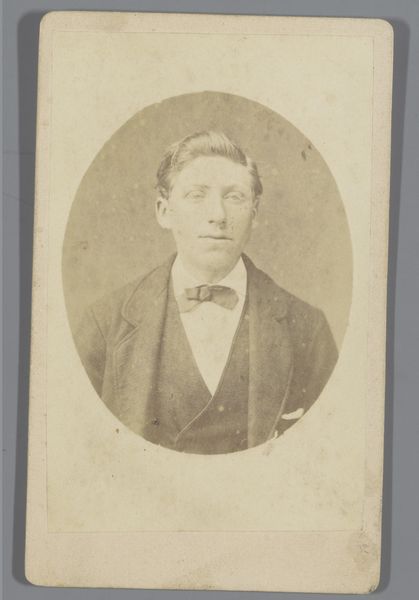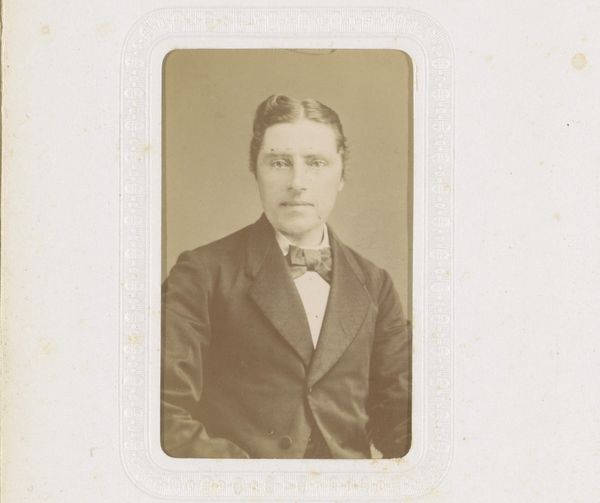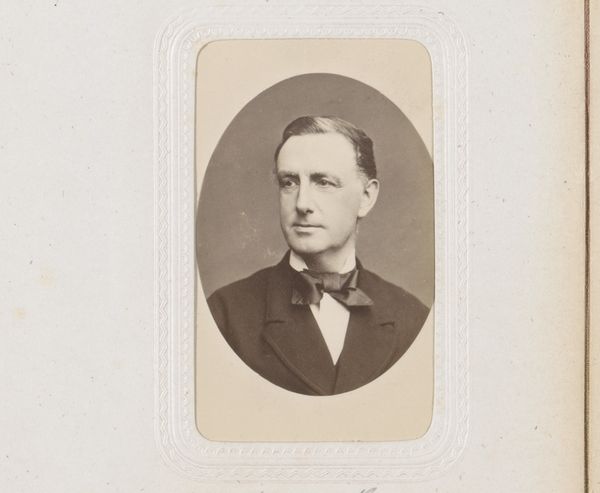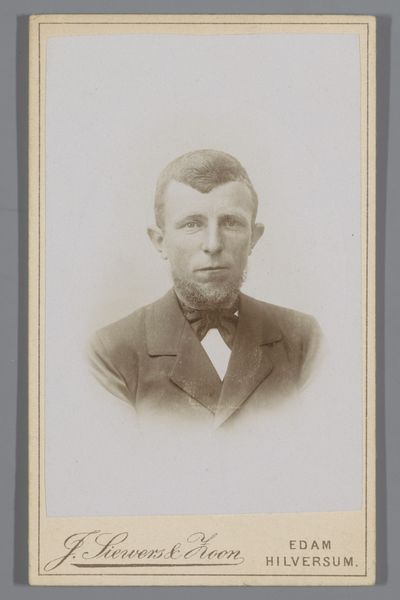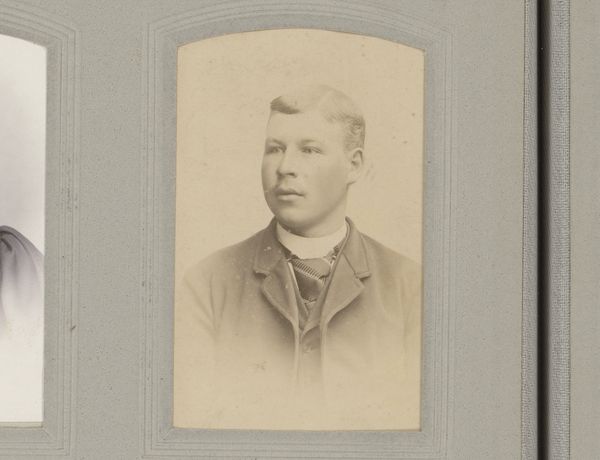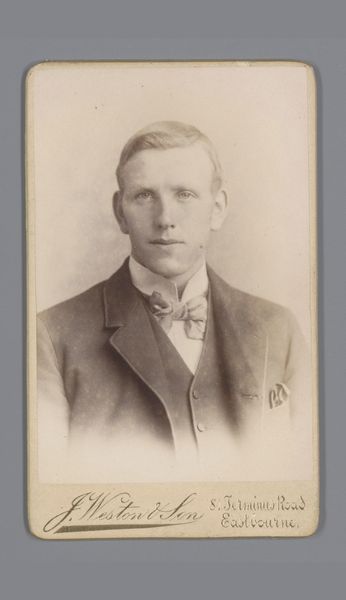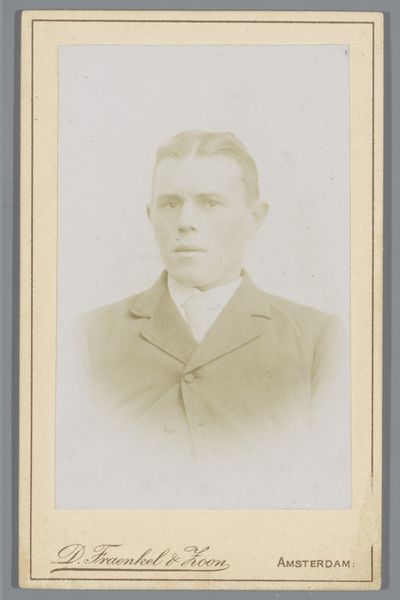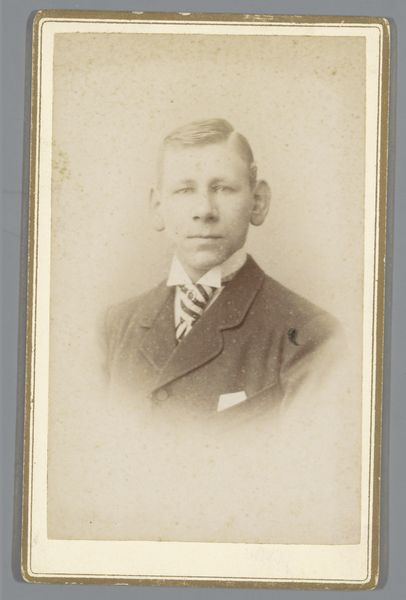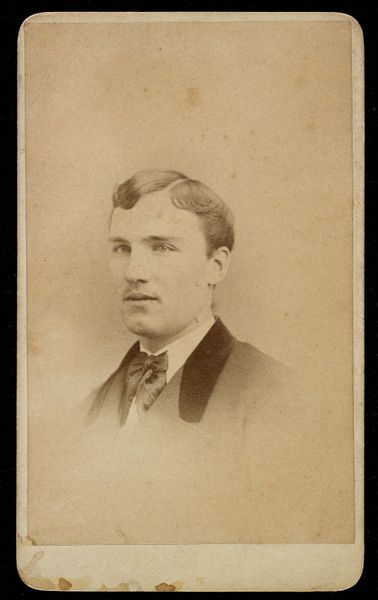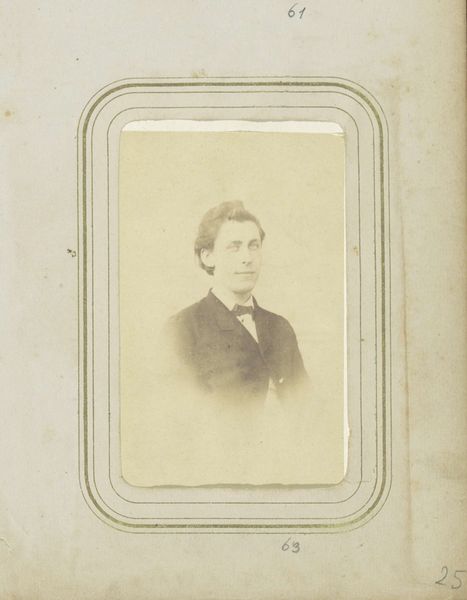
daguerreotype, photography, gelatin-silver-print
#
portrait
#
16_19th-century
#
daguerreotype
#
photography
#
gelatin-silver-print
#
genre-painting
Dimensions: height 103 mm, width 63 mm
Copyright: Rijks Museum: Open Domain
Curator: So, here we have "Portret van een onbekende man" (Portrait of an Unknown Man), created sometime between 1859 and 1890, likely in Amsterdam, attributed to Johannes Petrus Oppers. It's a gelatin silver print. Editor: My first thought? Quiet intensity. The sepia tones lend a sense of bygone melancholy. He seems to be staring right through us. Curator: Yes, the anonymity is striking. In this era of emerging photographic portraiture, it makes us question the sitter’s socio-economic positioning. The genre painting aspect plays into questions of visibility, particularly for those often omitted from official narratives. Who was deemed worthy to be captured and remembered? Editor: Makes you wonder if he ever imagined strangers like us, centuries later, scrutinizing his face. There’s a strange intimacy despite the anonymity, don't you think? He seems caught in a moment of deep contemplation. Almost like he is about to say something. Curator: And the format – the gelatin silver print – speaks to the burgeoning industrialization of image production. Photography democratized portraiture but also encoded it with new class dynamics. He's not wealthy, judging from the details, but he does display the decorum of middle-class aspirations. It is, therefore, an interesting look at the colonial middle-class in Amsterdam during the industrial period. Editor: Absolutely. His dress is tidy but understated, the tie ever-so-slightly askew gives him a relatable air of realness. He wasn't posing for some grand declaration. This was an "everyday" moment for a "common man". The fact that his name is lost is profoundly thought provoking! Curator: It speaks volumes about who is deemed ‘important’ enough to be recorded in historical accounts. Even the very fact of photography during that period was revolutionary. Editor: Precisely. So what does he tell us about representation, visibility and access to art, two centuries later? Curator: An interesting lens through which to interrogate these persistent and unequal power structures. Editor: And the unknown man offers more questions than answers to fuel our search.
Comments
No comments
Be the first to comment and join the conversation on the ultimate creative platform.
